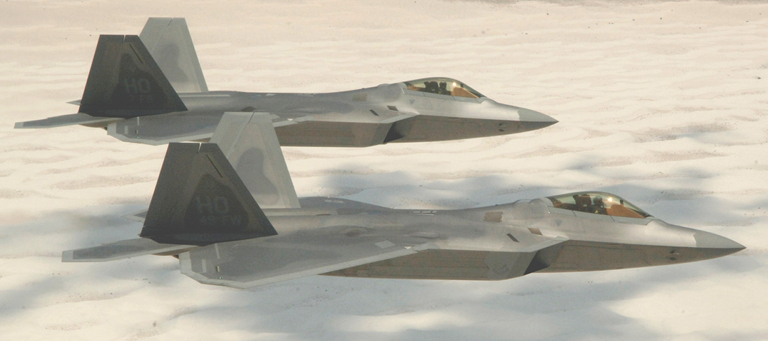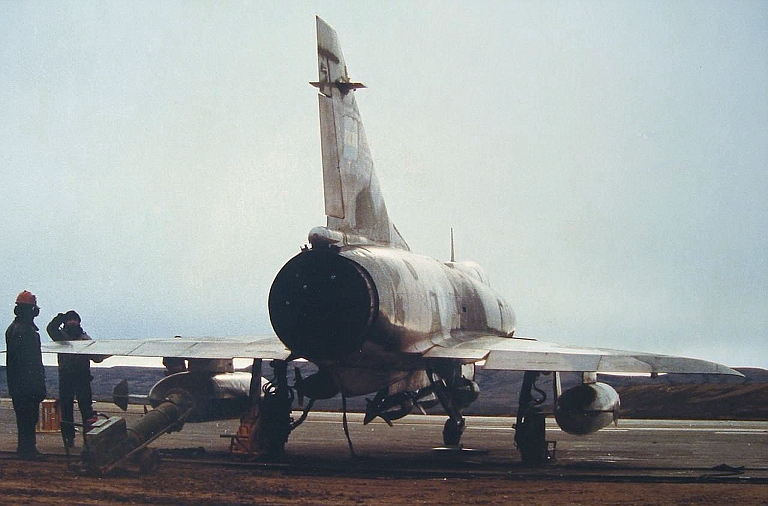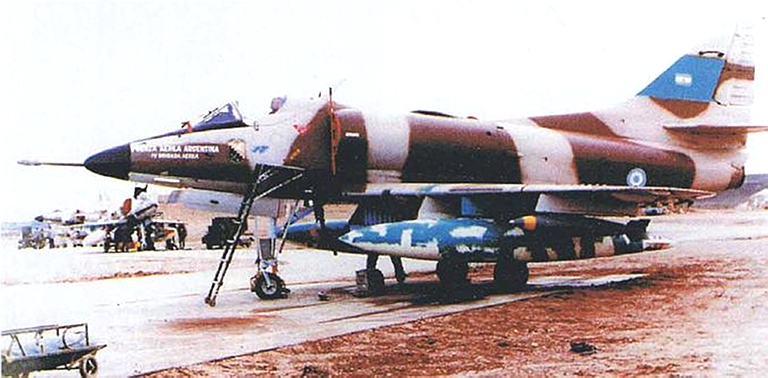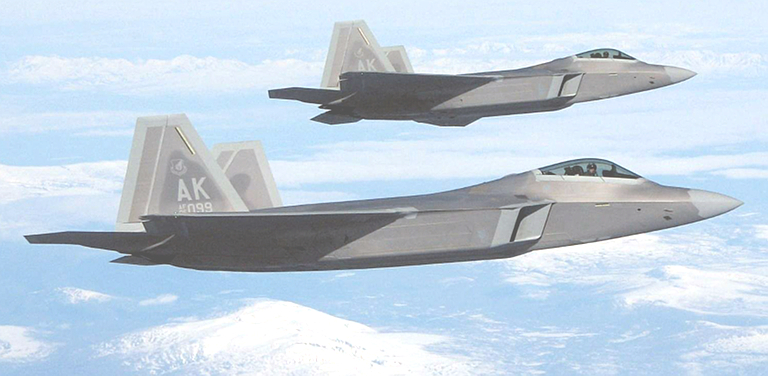|
||||||||||||||||||||||
![Home - Air Power Australia Website [Click for more ...]](APA/APA-Title-NOTAM.png) |
||||||||||||||||||||||
![Sukhoi PAK-FA and Flanker Index Page [Click for more ...]](APA/flanker.png) |
![F-35 Joint Strike Fighter Index Page [Click for more ...]](APA/jsf.png) |
![Weapons Technology Index Page [Click for more ...]](APA/weps.png) |
![News and Media Related Material Index Page [Click for more ...]](APA/media.png) |
|||||||||||||||||||
![Surface to Air Missile Systems / Integrated Air Defence Systems Index Page [Click for more ...]](APA/sams-iads.png) |
![Ballistic Missiles and Missile Defence Page [Click for more ...]](APA/msls-bmd.png) |
![Air Power and National Military Strategy Index Page [Click for more ...]](APA/strategy.png) |
![Military Aviation Historical Topics Index Page [Click for more ...]](APA/history.png)
|
![Intelligence, Surveillance and Reconnaissance and Network Centric Warfare Index Page [Click for more ...]](APA/isr-ncw.png) |
![Information Warfare / Operations and Electronic Warfare Index Page [Click for more ...]](APA/iw.png) |
![Systems and Basic Technology Index Page [Click for more ...]](APA/technology.png) |
![Related Links Index Page [Click for more ...]](APA/links.png) |
|||||||||||||||
![Homepage of Australia's First Online Journal Covering Air Power Issues (ISSN 1832-2433) [Click for more ...]](APA/apa-analyses.png) |
|
|||||||||||||||||||||
| Last Updated: Mon Jan 27 11:18:09 UTC 2014 | ||||||||||||||||||||||
|
||||||||||||||||||||||
|
||||||||||||||||||||||
![Home - Air Power Australia Website [Click for more ...]](APA/APA-Title-NOTAM.png) |
||||||||||||||||||||||
![Sukhoi PAK-FA and Flanker Index Page [Click for more ...]](APA/flanker.png) |
![F-35 Joint Strike Fighter Index Page [Click for more ...]](APA/jsf.png) |
![Weapons Technology Index Page [Click for more ...]](APA/weps.png) |
![News and Media Related Material Index Page [Click for more ...]](APA/media.png) |
|||||||||||||||||||
![Surface to Air Missile Systems / Integrated Air Defence Systems Index Page [Click for more ...]](APA/sams-iads.png) |
![Ballistic Missiles and Missile Defence Page [Click for more ...]](APA/msls-bmd.png) |
![Air Power and National Military Strategy Index Page [Click for more ...]](APA/strategy.png) |
![Military Aviation Historical Topics Index Page [Click for more ...]](APA/history.png)
|
![Intelligence, Surveillance and Reconnaissance and Network Centric Warfare Index Page [Click for more ...]](APA/isr-ncw.png) |
![Information Warfare / Operations and Electronic Warfare Index Page [Click for more ...]](APA/iw.png) |
![Systems and Basic Technology Index Page [Click for more ...]](APA/technology.png) |
![Related Links Index Page [Click for more ...]](APA/links.png) |
|||||||||||||||
![Homepage of Australia's First Online Journal Covering Air Power Issues (ISSN 1832-2433) [Click for more ...]](APA/apa-analyses.png) |
|
|||||||||||||||||||||
| Last Updated: Mon Jan 27 11:18:09 UTC 2014 | ||||||||||||||||||||||
|
||||||||||||||||||||||
Will the US Air Force be
Annihilated
|
||||||||
|
Air Power
Australia - Australia's Independent Defence Think Tank
|
||||||||
| Air Power Australia NOTAM 17th February, 2009 |
||||||||
|
||||||||
|
||||||||
 The F-22A Raptor and B-2A are the only US
combat aircraft preceding the planned “2018 bomber / NGB” which can fly
high sortie rates into advanced and emerging air defence systems
without suffering unsustainable loss rates. The F-35 Joint Strike
Fighter is designed for limited threat capabilities and lacks both the
stealth performance and speed to survive. A range of recent analyses
show that the US Air Force will be defeated in combat unless it deploys
many more F-22A Raptor fighters (US Air Force image).
|
||||||||
| A question that needs
to be asked is: why have so
many US Air Force senior officers risked their careers so often in
recent years,
to publicly argue for more F-22 Raptors, given the Bush
Administration's
concerted effort to terminate this program? Could it be that the U.S. Air Force has “crunched the numbers”, and that the numbers crunch the F-35A JSF, and therefore more F-22’s are required? Could it be that the dedicated U.S. Air Force senior officers and executives, knowing the truth, felt duty bound to give sage advice to their political masters? Could it be that such ‘inconvenient truths’ resulted in some of these officers and executives having their careers terminated? We know for a fact that providing exactly such advice resulted in the RAND Corporation effectively terminating one of its most brilliant and lauded air combat analysts – Dr John Stillion. Let us open the discussion with the term ‘annihilation’. Let us not perpetuate the misuse of the word ‘decimate’ which means ‘kill one in ten’, but set the criteria for ‘annihilate’ to such warfare ‘that kills more than ninety percent of a deployed force’. Annihilation in air combat is nothing new. During my RAAF career I was proud to be a member of RAAF No 76 Squadron – a unit with a distinguished war record. Its first battle was at Milne Bay in New Guinea during World War II, where a Japanese landing was repulsed. It was Japan’s first defeat of the war. Fighting alongside the Australian Imperial Forces, and RAAF No 75 Squadron, only 17 of the 40 P-40 Kittyhawks survived. Not quite annihilation, but close[i]. The Falklands war in April 1982 took a heavy toll of the Argentine Air Force. Of the 129 air combat aircraft available, up to 47 were destroyed. Again, not quite annihilation, but much deadlier than a decimation. It took the Argentine Air Force over a decade to recover [ii]. The Israel Air Force annihilated the Syrian Air Force in the Bekaa Valley in June 1982. The loss rate was 82 Syrian Air Force aircraft for no Israeli losses. The Syrian Air Force has never recovered. In addition, 87 the Syrian SAM sites in the Bekaa Valley were destroyed with no Israeli losses [iii]. There are a great many good case studies in which air forces or air arms suffered near annihilation, and more than often the combatants qualified as “peer competitors”, entering the conflict with similar technology aircraft and similar numbers. Contrary to the popular idea, where there is a large technological and/or numerical disparity, the weaker side often will not contest its opponent at all. |
||||||||
|
Not Understanding the Attrition Game  Argentina's military planning during the
futile Falklands Islands air campaign against the Royal Navy in 1982
makes the best recent case study of the costs incurred by throwing the
mathematics of attrition warfare out the window. Prohibitive losses
were suffered in combat aircraft and aircrew, which took over a decade
to recover from. Courage is not a substitute for number crunching in
this game. IAI Dagger (Mirage V) above, A-4C below (Argentina MoD
images).
Direct Combat Losses: 11 x IAI Dagger / 2 x Mirage IIIEA; 20 A-4C/Q Skyhawk; 2 x Canberra B62.  |
||||||||
| Let us now turn our attention to
possible future
air warfare around the rim of the not-so-Pacific Ocean in the 2015-2020
period,
when in this region there could be as many as 400 Flankers with Su-35BM
class capabilities.Suppose there is a “major
regional” conflagration
that the U.S. Air Force is called upon to defeat [iv]. Now, I do not want to overwhelm you with numbers, but simply choose values that are ‘reasonable and representative’. Suppose our analysis examines air combat operations against the Russian built Sukhoi Su-35BM Flanker E, using either the F-35A Lightning II Joint Strike Fighter or the F-22A Raptor. Assumed aircraft numbers and armament are such [v]: - 400 Su-35BM – each armed with 8 x PL-12 BVR Missiles versus: - 450 F-35A – each armed with 4 x AIM-120 BVR Missiles, or - 350 F-22A – each armed with 6 x AIM-120 BVR Missiles, or - 150 F-22A – each armed with 6 x AIM-120 BVR Missiles. The first issue is the overall kill probabilities of the BVR (Beyond Visual Range) missiles. Dr John Stillion’s operations research indicates that the success rate of the AIM-120 in BVR combat against un-alerted aircraft, without defensive measures, is around 50%. The Su-35BM will have the full panoply of sensors and electronic defences – an Electro-Optical Search and Track (IRST) system to detect the launch flare of the AIM-120s, a Radar Warning System to sense the radars and missile active seekers, a Missile Approach Warning System to detect the missile as it closes, DRFM (Digital RF Memory) based Electronic Counter Measures (ECM) to jam the missiles’ seeker heads and the launch fighters' radars, possibly a towed decoy and finally, the inherent ability to generate extremely high turn rates to out-manoeuvre an incoming missile and “spoil” its endgame. The faster and higher flying F-22A extends the performance of the AIM-120 in comparison with the F-35 Joint Strike Fighter. We could expect AIM-120 kill probabilities against such an aircraft to be about 15 percent for the F-35A and about 20 percent for the F-22. The F-35A Joint Strike Fighter will mostly be forced to fight at subsonic speeds, and below 40,000 feet. The Lightning II does not have the defensive Electronic Counter Measures of the Su-35BM, nor the agility to avoid missiles. However, it’s Distributed Aperture System will detect many of the incoming PL-12s as they close. The rear-hemisphere Radar Cross Section and infra-red emissions make it possible for the Su-35BMs to engage the F-35 with BVR missiles, especially if the F-35 tries to disengage. The single-shot kill probability of the PL-12 versus the F-35 could be in the region of 10 percent. The F-22A Raptor is designed for air dominance, and its superior speed, altitude and agility increase the kill probability of its missiles, and reduce the kill probability of the enemy’s missiles. Its all aspect stealth capability frustrates hostile fighter radars and missile seekers. In this engagement with the Su-35BM’s PL-12 missiles, a PL-12 kill probability of about 5 percent would be reasonable. Now, let us perform some simulation using the basic mathematics of attrition warfare [vi]. Suppose the U.S. Air Force deploys 450 F-35As to counter the 400 Su-35BMs. Notwithstanding the claims that the F-35 enjoys a 6:1 advantage over a Flanker, slightly superior JSF numbers have been assigned, ‘just to be sure’. The air combat plan for both sides is to launch missions with four flights of four aircraft, so 16 Blue Force aircraft engage 16 Red Force aircraft. This is consistent with current US and Russian doctrine for using these aircraft types. The outcome is devastating for the U.S. Air Force. After only 44 missions, the U.S. Air Force’s F-35A force is annihilated, with some 401 F-35As being destroyed, and presumably most of the pilots killed. The enemy did not come off too lightly, losing 331 aircraft and many pilots. How does the F-22A Raptor fare? Well, much better, as we would expect, and also as the RAND modelling predicts. Deploying fewer aircraft, 350 in this case, the Raptors quickly establish dominance of the airspace. After 31 missions of 16 aircraft flights, some 354 Su-35BMs are destroyed, and the ‘Red Force’ is the one annihilated. The Raptors still take hits, with 162 aircraft in total being lost. What if the U.S. Air Force is constrained to only 183 F-22As, as per the “Rumsfeld Edict”, and with the usual availability rates, can only deploy 150 aircraft or the ten “combat coded” squadrons to the conflict? In this scenario, the results are devastating for the U.S. Air Force. The air war only lasts for 25 missions, with some 135 Raptors lost and the U.S. Air Force’ air combat force annihilated through cumulative attrition. The ‘Red Force’ loses 295 Su-35BMs, but it’s superior numbers prevail and the Red side wins this air war. The force structure model comprising a mix of 150 x F-22A and 300 x F-35A is not modelled in this discussion. This is because in a practical combat environment, the F-35 component of the force would get into difficulty very quickly and end up causing F-22s to be diverted from offensive operations to save the F-35 component from annihilation. When an Su-35BM class adversary is involved, the battlespace will always be lethal for the F-35. The result is that the initiative goes to the Red side, to the detriment of the Blue side. There is a high personal cost for the 350 F-35A Lightning II or 150 F-22A pilots involved. Annihilated in air combat, their individual probability of survival, if 1.5 pilots are assigned to each deployed aircraft, is only about 16 percent – only about one in six pilots returns from the battle. With the same crewing ratio for the F-22A deployment of 350 aircraft, the survival rate is about 80 percent, or four out of five pilots return [vii]. These are truly scary results. Clearly, opting for the currently planned mix of F-22A and F-35A aircraft has serious long-term strategic implications for America’s future. Some urgent ‘real world’ operations research is required. My counsel to the Obama Administration is thus: Task 1: Direct the U.S. Air Force to immediately conduct an Operational Test and Evaluation of the AIM-120C and AIM-120D in the combat environment it will encounter in the future. The target aircraft should be an F-15C configuration with the same performance and range of defensive countermeasures as carried by the Su-35BM – active electronic defenses, towed decoys and when the missile closes, high agility missile avoidance manoeuvres. Progressive sampling should be used to establish a 95 percent confidence level in the result; Task 2: As a matter of urgency, direct the Joint Strike Fighter Project Office to measure the actual radar and infrared signature of the F-35A in its operational configuration. Use an F-15C/APG-63(V)3 with the high power AESA radar and an AAS-42 infrared sensor to identify the ranges and aspects at which the F-35A will be detected and engaged with Beyond-Visual-Range and Within-Visual-Range missiles. These measurements should be observed by an independent agency, with scientific oversight provided by the Defense Science Board; Task 3: Direct the U.S. Air Force to build an independent (i.e. devoid of commercially or politically interested parties) ‘Blue Force vs Red Force’ simulation of air combat likely to be encountered in the 2015 – 2020 timeframe. Both Blue and Red sides must be unconstrained, and directed to simulate their air combat engagements in the way that best favours their side; this simulation would draw reliable data from the previous two exercises. Task 4: Direct the U.S. Air Force to perform an independent (i.e. devoid of commercially or politically interested parties) comparative assessment of the F-22A Raptor Block 40 vs the F-35A CTOL Joint Strike Fighter. This assessment must compare relative performance in long range and close air combat against advanced fighters such as the Su-35BM/Su-35-1, as well as survivability against advanced Surface to Air Missile systems such as the SA-20/21/23 and advanced supporting sensors. The findings of this assessment, when related to unit procurement costs for these aircraft, will determine whether there is any point at all in continuing to spend money on the Joint Strike Fighter program. Prima-facie, passing the information available today through an air combat number cruncher, indicates that current plans for only 183 F-22As has the U.S. Air Force headed for annihilation in large-scale air warfare against the type of threat being built around the Pacific Ocean rim. The risk of this outcome can be entirely, and quickly, eliminated by building and deploying many more F-22 Raptors. The U.S. Air Force has previously suggested the number should be about 350. This is unfortunately not enough to cover the range of contingencies the U.S. Air Force will have to face in future decades, and is not even enough to robustly deal with specialised air combat scenarios as discussed here. The unavoidable and inconvenient truth is that terminating the F-22 Raptor program at 183 airframes guarantees the future defeat of the U.S. Air Force in high intensity combat, and a high probability of annihilation as a result. |
||||||||
Download Milo's Air Combat Number Cruncher Here [.xls]  Contrary to
the widely held belief in Western bureaucratic circles, survivability
is important in combat aircraft as even a short air campaign of 2-3
months duration could see a smaller air force completely depleted of
aircraft and aircrew. The willingness to trade survivability away in
combat aircraft procurements is tantamount to saying “bodybags are fine
as long as it happens after my tenure is complete” . The F-22 is unique
as it is
the only extant or planned fighter which does not exact an
unsustainable toll in
bodybags if flown against modern air defences (US Air Force image).
|
||||||||
Endnotes:[i] Some good references on Milne Bay can be found at http://www.ww2australia.gov.au/asfaras/milnebay.html; http://www.dropbears.com/f/felix_noble/truscott.htm; [ii]
A good
summary of Falklands combat losses can be found at: http://en.wikipedia.org/wiki/Argentine_air_forces_in_the_Falklands_War
[iii]
The best
single discussion of the Bekaa Valley air campaign is that by Dr
Rebecca Grant,
in the June 2002 issue of Air Force
Magazine, refer: http://www.airforce-magazine.com/MagazineArchive/Pages/2002/June
2002/0602bekaa.aspx
[iv]
The
Su-35BM/Su-35-1/Su-27M2 “Super Flanker” is the variant now entering the
production cycle. Following Russian practice, the avionics and systems
components used will migrate over the next decade into in service
Flanker
variants as part of Mid Life Upgrades and Block Upgrades.
[v]
The
Chinese built PL-12 or SD-10 is an analogue to the US AIM-120C AMRAAM,
but slightly
longer ranging. It is equipped with the Russian designed Agat 9B-1348E
active
radar seeker common to the Russian R-77 Adder or “AMRAAM-ski”.
[vi]
The
simulator employed is available for download at:
http://www.ausairpower.net/Milos-Air-Combat-Number-Cruncher.xls
[vii] This model uses the simplest technique available and does not factor in the Lanchester “Square Law” model which would result in higher losses for both sides. The model also does not factor in BVR engagements which devolve into close combat, where the F-35 is outclassed completely, and the F-22’s advantages are much less pronounced against the highly agile Su-35BM. |
||||||||
|
|
||||||||
Related ReadingSurviving the Modern Integrated Air Defence System [Click for more ...] The Russian Philosophy of Beyond Visual Range Air Combat [Click for more ...] F/A-18E/F Super Hornet vs. Sukhoi Flanker Analysis [Click for more ...] Sukhoi Flanker Analysis [Click for more ...] F-22A Raptor Analysis [Click for more ...] Joint Strike Fighter Analysis [Click for more ...] |
||||||||
|
|
||||||||
| Air
Power Australia Website - http://www.ausairpower.net/ Air Power Australia Research and Analysis - http://www.ausairpower.net/research.html |
||||||||
 |
||||||||
| |
||||||||
|
|||||||||||||
![Sukhoi PAK-FA and Flanker Index Page [Click for more ...]](APA/flanker.png) |
![F-35 Joint Strike Fighter Index Page [Click for more ...]](APA/jsf.png) |
![Weapons Technology Index Page [Click for more ...]](APA/weps.png) |
![News and Media Related Material Index Page [Click for more ...]](APA/media.png) |
||||||||||
![Surface to Air Missile Systems / Integrated Air Defence Systems Index Page [Click for more ...]](APA/sams-iads.png) |
![Ballistic Missiles and Missile Defence Page [Click for more ...]](APA/msls-bmd.png) |
![Air Power and National Military Strategy Index Page [Click for more ...]](APA/strategy.png) |
![Military Aviation Historical Topics Index Page [Click for more ...]](APA/history.png)
|
![Information Warfare / Operations and Electronic Warfare Index Page [Click for more ...]](APA/iw.png) |
![Systems and Basic Technology Index Page [Click for more ...]](APA/technology.png) |
![Related Links Index Page [Click for more ...]](APA/links.png) |
|||||||
![Homepage of Australia's First Online Journal Covering Air Power Issues (ISSN 1832-2433) [Click for more ...]](APA/apa-analyses.png) |
|||||||||||||
| Artwork, graphic design, layout and text © 2004 - 2014 Carlo Kopp; Text © 2004 - 2014 Peter Goon; All rights reserved. Recommended browsers. Contact webmaster. Site navigation hints. Current hot topics. | |||||||||||||
|
Site Update
Status:
$Revision: 1.753 $
Site History: Notices
and
Updates / NLA Pandora Archive
|
|||||||||||||
|
|
Tweet | Follow @APA_Updates | |||||||||||
|
|
|||||||||||||
|
|
|||||||||||||